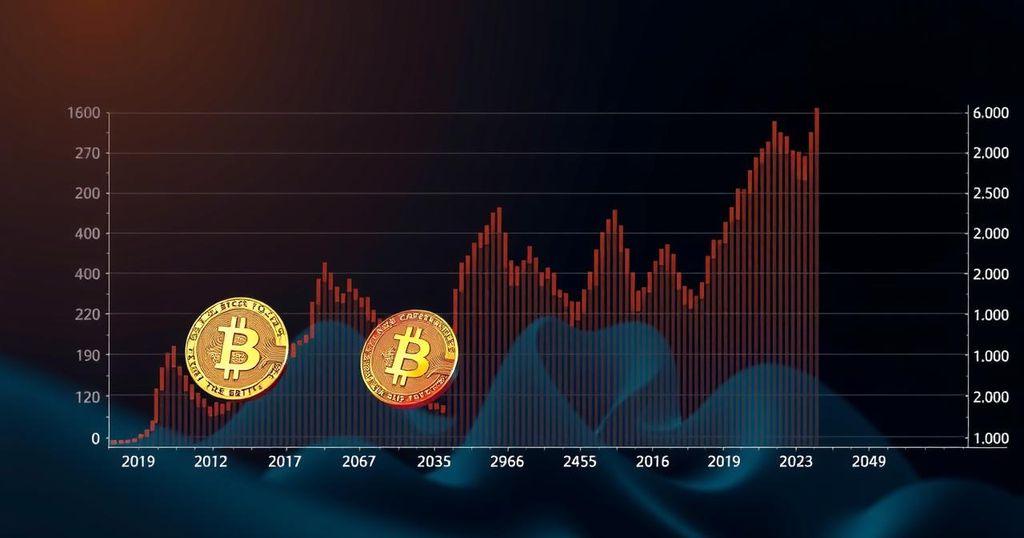Bitcoin’s Distribution Phase: Opportunities Amidst Market Uncertainty
Bitcoin has entered a distribution phase, marked by increased selling activity among holders, reflected in a low Accumulation Trend Score. Currently trading at about $95,249, Bitcoin faces bearish sentiment, yet some view the price drop as a buying opportunity, while critics predict a market crash. Analysts and investors are advised to remain vigilant.
Bitcoin, the premier digital currency, has recently transitioned into a distribution phase, indicating that market participants are now more focused on selling rather than accumulating the cryptocurrency. This development follows a bullish surge in Bitcoin’s value, which has subsequently led to a price correction. The current state of the market is reflected by an Accumulation Trend Score (ATS) of 0.21 as reported by Glassnode, a prominent on-chain analytics platform. This score suggests a sell-off mentality among holders, contributing to a broader downward trend in the cryptocurrency landscape.
As Bitcoin undergoes this shift, analysts are expressing concern regarding the bearish sentiment it engenders. As of the latest reports, Bitcoin is trading at approximately $95,249, marking a 4.68% decrease over the past 24 hours. The trading volume has surged to nearly $70 billion, indicative of heightened market activity amid this uncertainty.
Despite the prevailing pessimism, sentiments surrounding Bitcoin’s future are divergent. Esteemed author Robert Kiyosaki views the price decline as a strategic buying opportunity. He notes that the recent drop from $102,000 to $95,000 serves as an attractive entry point for investors seeking to buy low while accumulating Bitcoin, especially considering that less than two million Bitcoins remain to be mined. Conversely, Bitcoin critic Peter Schiff anticipates a potential market crash, warning that buyers may soon realize that the U.S. government is unlikely to acquire Bitcoin, which could lead to drastic sell-offs.
The distribution phase of an asset typically signifies a period where holders are more inclined to sell rather than accumulate, often resulting in a declining price trend. In the case of Bitcoin, this phase has been identified by a notably low Accumulation Trend Score (ATS), suggesting that the market dynamics have shifted towards selling. This change follows a recent bullish period characterized by significant price increases, which have been followed by necessary price corrections. Understanding these market behaviors is crucial for investors looking to navigate the challenges in the cryptocurrency space.
In summary, Bitcoin’s transition into a distribution phase raises considerable concerns about its future price trajectory, as indicated by the prevailing bearish sentiment in the market. While some investors, such as Robert Kiyosaki, view the decline as an opportunity, others, including Peter Schiff, anticipate a potential crash following diminished interest from institutional buyers. Investors are advised to exercise caution and conduct thorough research prior to making investment decisions in the current environment.
Original Source: u.today








Post Comment